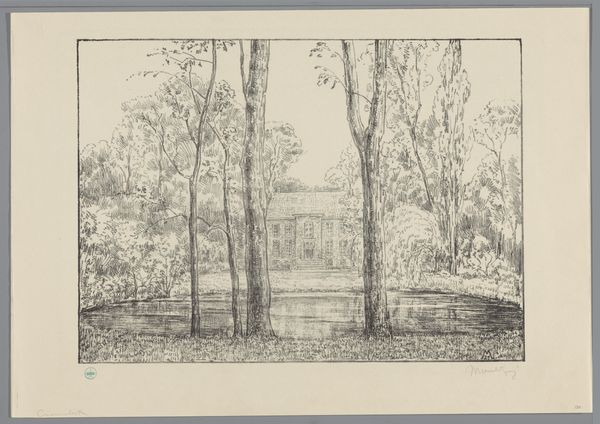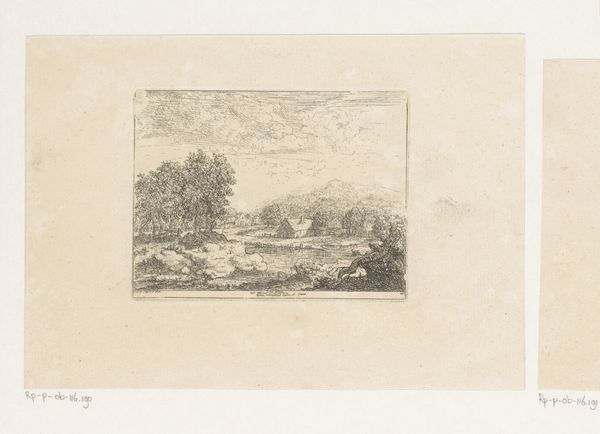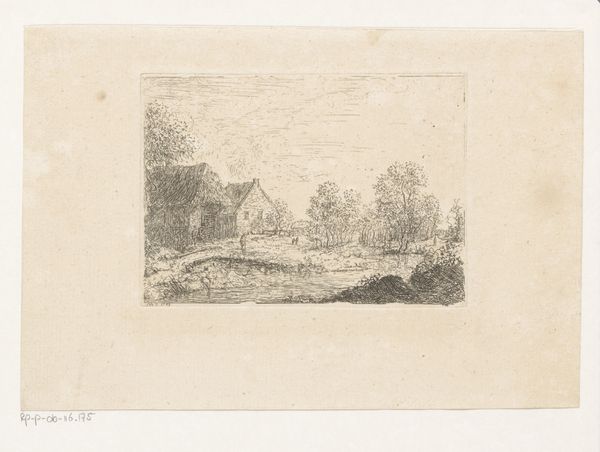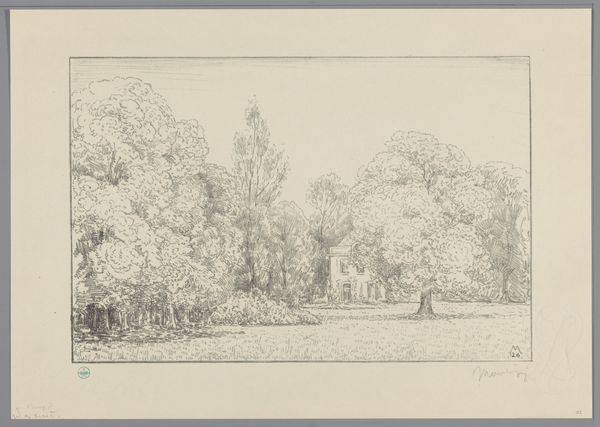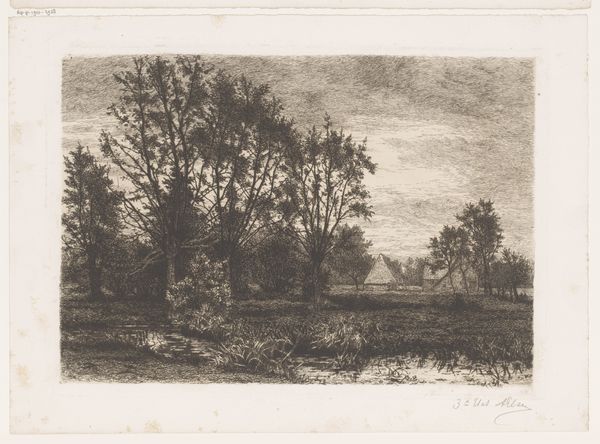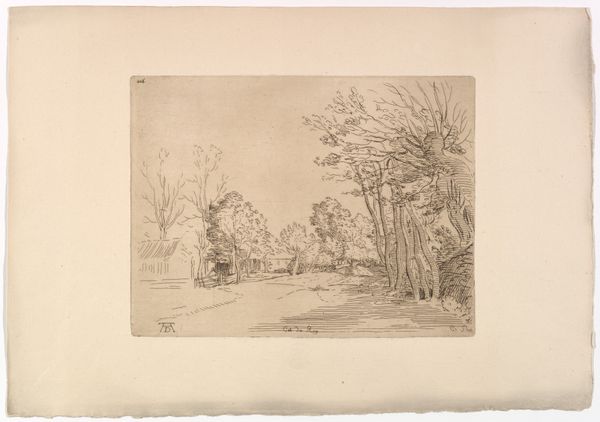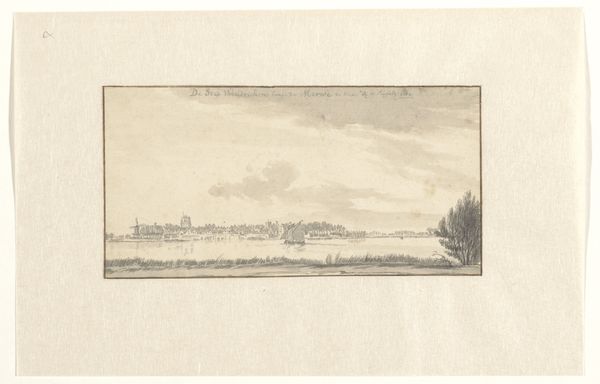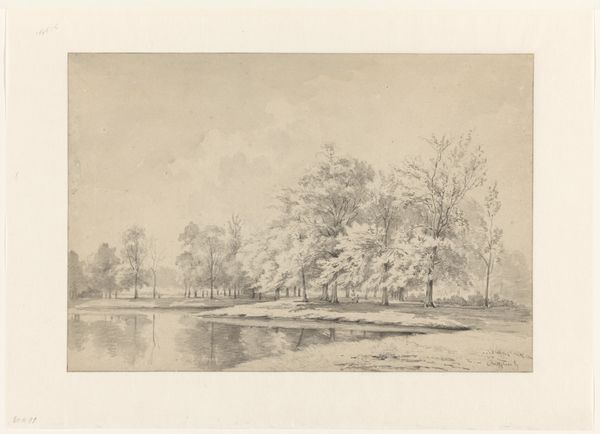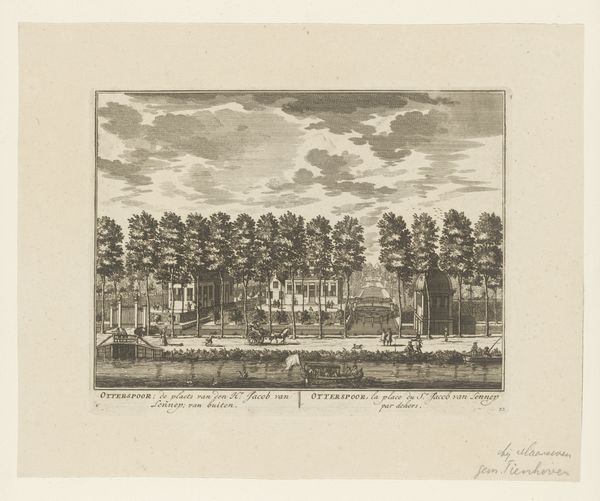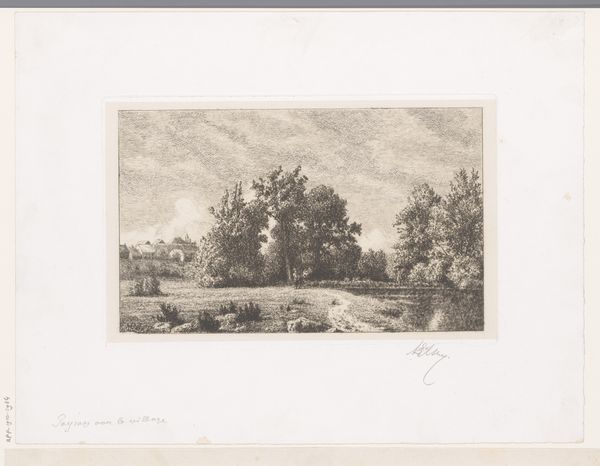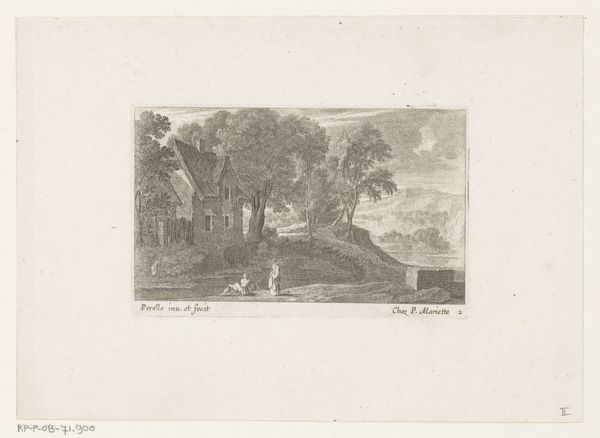
print, etching
# print
#
etching
#
landscape
#
realism
Dimensions: height 92 mm, width 289 mm
Copyright: Rijks Museum: Open Domain
Editor: So, this etching is titled "Boerderij bij Santpoort," or "Farm near Santpoort," made by Wijnand Otto Jan Nieuwenkamp, likely between 1899 and 1919. The landscape feels very still and a bit bleak to me, though the light suggests a sunrise or sunset. What do you see in this piece, especially concerning its historical context? Curator: I'm immediately drawn to how Nieuwenkamp situates this rural scene within the broader socio-economic shifts occurring at the turn of the century. This quiet farm exists alongside increasing industrialization and urbanization. The etching romanticizes a simpler life, reflecting a desire to return to agrarian roots during a time of immense social change. Editor: That's interesting! I hadn't considered that romanticisation. The muted tones contribute to that feeling, don't they? Was this a common sentiment at the time? Curator: Absolutely. There's a direct link between art and resistance, even in landscape art. As societies rapidly industrialized, the countryside became idealized as a space of purity, tradition, and authentic experience. It’s interesting how Nieuwenkamp uses the print medium – traditionally linked to mass production – to depict such an individualistic yearning for the past. Editor: I see what you mean. So, by creating an etching of a farm, he's making a statement about the value of a rural lifestyle in an era of rapid industrial growth? Curator: Precisely. And consider the implications of that choice – who had access to these images, and what messages were they receiving about labor, progress, and societal values? Whose version of the "authentic" rural life are we seeing here? It provokes vital discussions on societal progress and what is sacrificed in its wake. Editor: That really changes how I view the work. It's no longer just a peaceful landscape but a commentary on societal anxieties of the time. Thank you! Curator: And for me, you highlighted the visual appeal that draws us to it, revealing how that invitation functions within that critical framing.
Comments
No comments
Be the first to comment and join the conversation on the ultimate creative platform.
